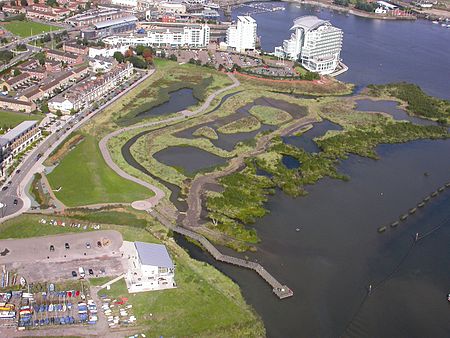Cardiff Bay Wetlands Reserve
Nature reserves in CardiffWetlands of Cardiff

Cardiff Bay Wetlands Reserve is located in Cardiff Bay in the city of Cardiff. It covers an area of approximately 8 hectares (19.8 acres). The area was officially opened as a wildlife reserve on 25 July 2002 in what was previously an area of Site of Special Scientific Interest (SSSI) up until the opening of the Cardiff Bay Barrage in April 2001. The area had previously been salt marsh, but the Barrage created 200 hectares of freshwater lake, and from this the reserve was developed.
Excerpt from the Wikipedia article Cardiff Bay Wetlands Reserve (License: CC BY-SA 3.0, Authors, Images).Cardiff Bay Wetlands Reserve
Havannah Street, Cardiff Cardiff Bay
Geographical coordinates (GPS) Address Website External links Nearby Places Show on map
Geographical coordinates (GPS)
| Latitude | Longitude |
|---|---|
| N 51.459838888889 ° | E -3.1701861111111 ° |
Address
Cardiff Bay Wetlands Reserve
Havannah Street
CF10 5SG Cardiff, Cardiff Bay
Wales, United Kingdom
Open on Google Maps









